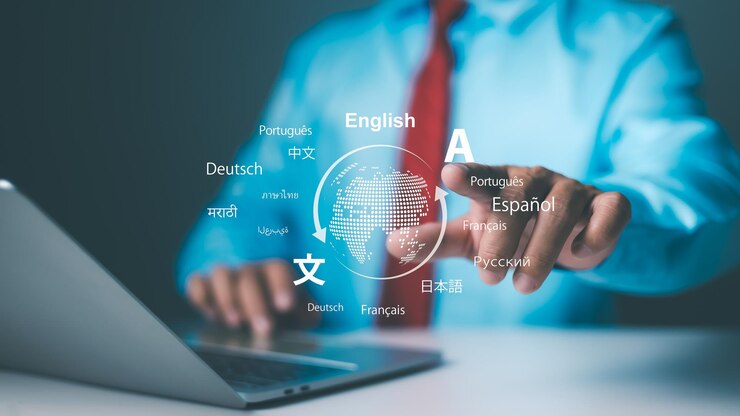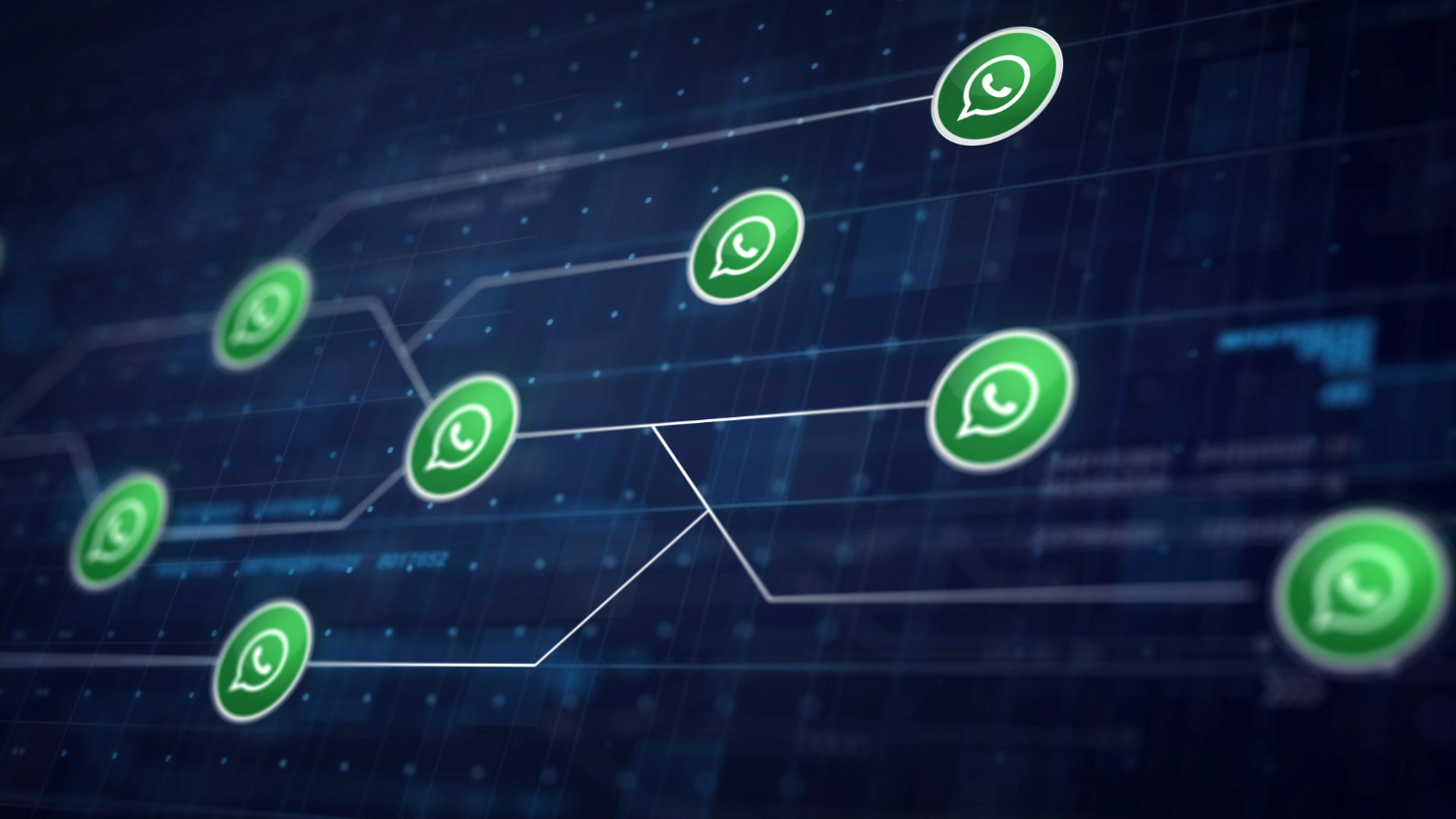When “Lost in Translation” Hurts Your Brand
A few months ago, a French skincare brand tried to expand into Japan. Their slogan, “Feel the Glow”, got translated as “Sweat Proudly.” It went viral but for all the wrong reasons.
If you’ve ever tried to expand your business beyond borders, you already know how tricky it can be. Translating marketing content isn’t like translating a restaurant menu. It’s not just about converting words from one language to another — it’s about keeping your brand’s emotion, voice, and trust intact.
Imagine spending thousands on an ad campaign, only for it to sound awkward or offensive in another country. That’s not just embarrassing — it’s expensive.
In today’s global digital market, every ad, caption, and email matters. And learning how to translate marketing content for your business can make the difference between “meh” and “memorable.”
Why Translating Marketing Content Matters for Global Businesses
Global consumers don’t buy from brands they don’t understand — literally and culturally.
According to Statista, over 65% of online shoppers prefer to buy from websites available in their native language. And CSA Research found that 76% of global users won’t make a purchase if product information isn’t in their own language.
That’s millions of lost customers — just because your content wasn’t localized.
Think about it:
- A startup in Bangladesh wants to reach clients in Germany.
- A U.S. cosmetics brand wants to sell in Latin America.
- A Korean gaming app wants to go global.
In all these cases, success depends on speaking the customer’s language — naturally, emotionally, and locally.
That’s where translation meets marketing intelligence.
Step-by-Step: How to Translate Marketing Content for Global Success
Let’s break down the process of translating your marketing content the right way — step by step.
Step 1: Understand Who You’re Talking To
Before touching a single word, understand your audience.
Ask yourself:
- Who is my ideal customer in that market?
- What emotions or values do they respond to?
- What tone do they expect — formal, playful, or inspiring?
A friendly English slogan like “Hey, let’s talk savings!” might sound too casual or even disrespectful in Japanese or Arabic markets.
Example:
McDonald’s English tagline “I’m Lovin’ It” became “Me Encanta” (“I adore it”) in Spanish — same emotion, different cultural tone.
So start by doing some light cultural research. Check local idioms, advertising norms, humor, and formality levels. Tools like Google Trends and Ahrefs help you see what keywords and expressions are popular in your target language.
Goal: Build a short “Cultural Insight Sheet” for every new market. It’ll guide your translator — and protect your brand voice.
Step 2: Know the Difference — Translation vs Localization vs Transcreation
These three words are often mixed up, but in marketing, they mean completely different things.
| Type | What It Means | When to Use | Example |
|---|---|---|---|
| Translation | Converts words directly | Manuals, FAQs, product specs | “Order now” → “Commandez maintenant” |
| Localization | Adapts to culture, slang, visuals | Websites, social media, emails | “Black Friday Deals” → “Singles’ Day Offers” (China) |
| Transcreation | Rewrites creatively while keeping emotion | Ads, slogans, taglines | “Just Do It” → “Hazlo Ya” (Mexico) |
Translation changes words.
Localization changes context.
Transcreation changes feelings.
Tip: For ad campaigns or social media captions, always choose transcreation. That’s how brands like Nike and Coca-Cola stay globally relatable.
Step 3: Use AI Tools But Never Rely on Them Alone
AI is a fantastic starting point. But it’s not your final destination.
Tools like DeepL, ChatGPT (GPT-5), and Google Cloud Translate can quickly produce high-quality translations. However, they often miss tone, idioms, and cultural humor.
Here’s how to use them effectively:
- Use AI for your first draft.
- Edit manually for tone and flow.
- Have a native-language reviewer finalize it.
Example Workflow:
Upload your English ad copy → Translate using DeepL → Paste into ChatGPT and prompt: “Rewrite this in Spanish to sound natural and persuasive for a skincare audience.”
AI saves time. Humans save their reputation. Combine both for global-quality marketing.
Step 4: Adapt Visuals, Colors, and Symbols
Marketing isn’t only about words. Visuals speak volumes, too and sometimes, they speak the wrong message.
Colors, images, and gestures mean different things around the world.
| Visual Element | Western Meaning | Asian/Other Meaning | What to Do |
|---|---|---|---|
| Red | Passion, love | Luck, prosperity (China) | Use wisely depending on market |
| White | Purity | Mourning (Japan, India) | Avoid for celebrations |
| Thumbs Up | “Good job!” | Offensive (Middle East) | Replace with neutral gestures |
| Currency | $10 | 10€ / ¥1200 | Adjust local currency |
I once saw a startup use a piggy-bank icon in a campaign for a Muslim audience.
Bad idea — pigs are culturally taboo in many Islamic regions.
So when you translate marketing visuals, make sure your design language fits the culture too.
Step 5: Adjust Your Brand Voice But Keep Your Identity
Your voice is your brand’s personality. But even personalities adapt depending on who they’re speaking to.
Example:
A playful tagline like “Let’s make magic happen ✨” might work for U.S. teens but sound childish in Germany or Japan.
Here’s how to adapt without losing consistency:
- Keep your core tone (friendly, professional, luxury).
- Adjust sentence structure and politeness.
- Avoid idioms that don’t translate well (“nail it,” “spill the tea,” “game-changer”).
Pro Tip: Create a “Brand Voice Translation Guide” with dos and don’ts for translators. It ensures every email, ad, and post feels like you, no matter the language.
Step 6: Localize for SEO Speak the Search Engine’s Language
SEO isn’t universal.
Translating your keywords directly doesn’t mean they’ll rank abroad.
Example:
English keyword: “cheap flights”
Literal French translation: “vols bon marché”
But real users search for “vols pas chers.”
See the difference? It’s not translation — it’s behavior.
Steps for SEO Localization:
- Use Ahrefs or Semrush to find local keyword variations.
- Translate meta titles, tags, and descriptions in the target language.
- Add hreflang tags to your website (e.g.,
en,es,fr). - Localize URLs and slugs (
/de/angebote/for German “offers”).
Bonus: Use region-specific platforms — Baidu for China, Naver for Korea, Yandex for Russia — instead of just Google.
Step 7: Translate Social Media & Email Campaigns Intelligently
Your captions, emojis, and subject lines can make or break global engagement.
Example:
“Spill the tea on your new skincare routine ”
Sounds fun in English, but translated literally into Spanish (“Derrama el té…”) sounds confusing. Instead, say:
“Cuéntanos tu secreto de belleza ” (“Tell us your beauty secret”).
For Social Media:
- Translate hashtags locally (#Foodie → #AmantesDeLaComida).
- Adjust emojis and tone per platform (LinkedIn ≠ , TikTok).
- Post during local active hours.
For Emails:
- Use AI-assisted translation inside tools like Mailchimp or Brevo.
- A/B test subject lines in each language.
- Keep calls-to-action short (“Shop Now” → “Compra Ya”).
Step 8: Collaborate with Native Experts
Even the smartest AI can’t feel local humor or slang like a native speaker.
That’s why successful global brands always hire local linguists or marketing consultants.
Platforms like ProZ.com, Upwork, and Smartcat help you connect with certified translators who specialize in advertising or branding.
You can also build a regional feedback loop:
- Test content with small local focus groups.
- Collect reactions.
- Adjust before a full rollout.
Real Example:
Netflix uses local reviewers in each market to adjust titles, descriptions, and tone — not just translate them. That’s how Money Heist became La Casa de Papel worldwide success.
Step 9: Test and Measure Before Full Launch
Before you go global, test your translations like you’d test a new ad.
Run small-scale campaigns on Facebook Ads Manager or Google Ads with your translated copy. Compare performance metrics:
| Version | CTR | Conversion | Feedback |
|---|---|---|---|
| Literal Translation | 1.2% | 0.8% | Confusing |
| Localized Rewrite | 3.9% | 2.7% | Natural & engaging |
Sometimes just a rephrased CTA (“Learn more” → “Discover how”) triples conversions.
Keep testing tone, phrasing, and visuals until your message “clicks” culturally.
Step 10: Maintain Consistency Across All Channels
Imagine your brand sounding formal on your website but playful on Instagram. Confusing, right?
That’s why consistency matters.
Use tools like Lokalise, Smartling, or MemoQ to create a Translation Memory Database (TMD) — a shared glossary that saves approved phrases, slogans, and terminology.
So whether your copywriter in London or your translator in Tokyo writes it, they’ll both say the same thing — just in their own language.
Comparison Table: Top AI Tools to Translate Marketing Content for Business
| Tool | Best For | Key Strength | Limitation | Price |
|---|---|---|---|---|
| DeepL Pro | Business documents & ads | Natural fluency | Limited voice options | From $8.74/mo |
| ChatGPT (GPT-5) | Context-aware creative translation | Emotionally nuanced | Needs prompt tuning | From $20/mo |
| Lokalise | Multi-team localization | Works with WordPress, Shopify | Steep learning curve | From $15/mo |
| Smartling | Enterprise campaigns | Translation memory | Costly for small firms | Custom |
| Google Translate API | Bulk translation | Fast, reliable | Robotic tone | Free / pay-per-use |
(Sources: Official product sites, 2025 updates)
Real-Life Success Stories
Coca-Cola: “Share a Coke”
When Coca-Cola localized its campaign, it didn’t just translate names — it adapted them culturally. In China, it used nicknames like “Bestie” and “Buddy” because personal names weren’t common on products. Sales exploded.
Nike: “Just Do It”
Nike’s legendary slogan translates differently worldwide — from “Hazlo Ya” in Mexico to “Tôi Làm Được” in Vietnam — keeping its motivation alive, not literal.
McDonald’s Menus
McDonald’s localizes everything — text, visuals, even food names. The “McSpicy Paneer Burger” in India proves localization goes beyond translation it’s cultural adaptation in action.
The E-E-A-T Factor: Why Google Rewards Localized Marketing
- Experience: Have real examples or testimonials from users in each region.
- Expertise: Share how your translation process ensures clarity and trust.
- Authoritativeness: Cite credible sources (Apple, Statista, Microsoft).
- Trustworthiness: Avoid clickbait or misleading claims.
When your content shows empathy for different cultures, Google sees it as valuable human-first content.
Future of Marketing Translation
AI translation will soon go beyond text.
By 2027, we’ll see:
- Real-time speech-to-speech translation in marketing videos.
- Emotion-aware AI, adapting tone per country.
- Personalized ad translation, adjusting difficulty for each reader’s language level.
That means your next global campaign could launch in 10 languages — instantly, and naturally.
FAQs
Q1: What’s the difference between translation and localization?
Translation converts words; localization adapts them for culture, humor, and emotion.
Q2: Can AI fully replace human translators?
Not yet. AI is great for drafts, but humans ensure emotional accuracy and tone.
Q3: Which languages need the most localization?
Culturally rich ones — like Japanese, Arabic, and Chinese — where tone and context are vital.
Q4: How do I make my translated website rank globally?
Use localized keywords, hreflang tags, and country-specific SEO.
Q5: How much should I budget for marketing translation?
Anywhere from $0.08–$0.20 per word with human review, or cheaper with AI-assisted editing.
Final Takeaway: Speak Their Language, Win Their Hearts
So, what’s the bottom line?
Translating marketing content isn’t just about being understood — it’s about being felt.
When your ad speaks like a friend, not a foreigner, you connect emotionally — and that’s what drives conversions.
So whether you’re a student planning to work in global marketing, a small business going international, or a professional managing multiple regions — remember this:
“Language sells. Culture connects.”
Use that power wisely, and your message won’t just cross borders — it’ll live in hearts.
References
- Statista – Global eCommerce Language Data (2025)
- CSA Research – Localization and Consumer Behavior Report
- DeepL Official Translator
- Google Translate API Documentation
- Harvard Business Review – Localization Strategy Insights
- Microsoft Translator for Business




